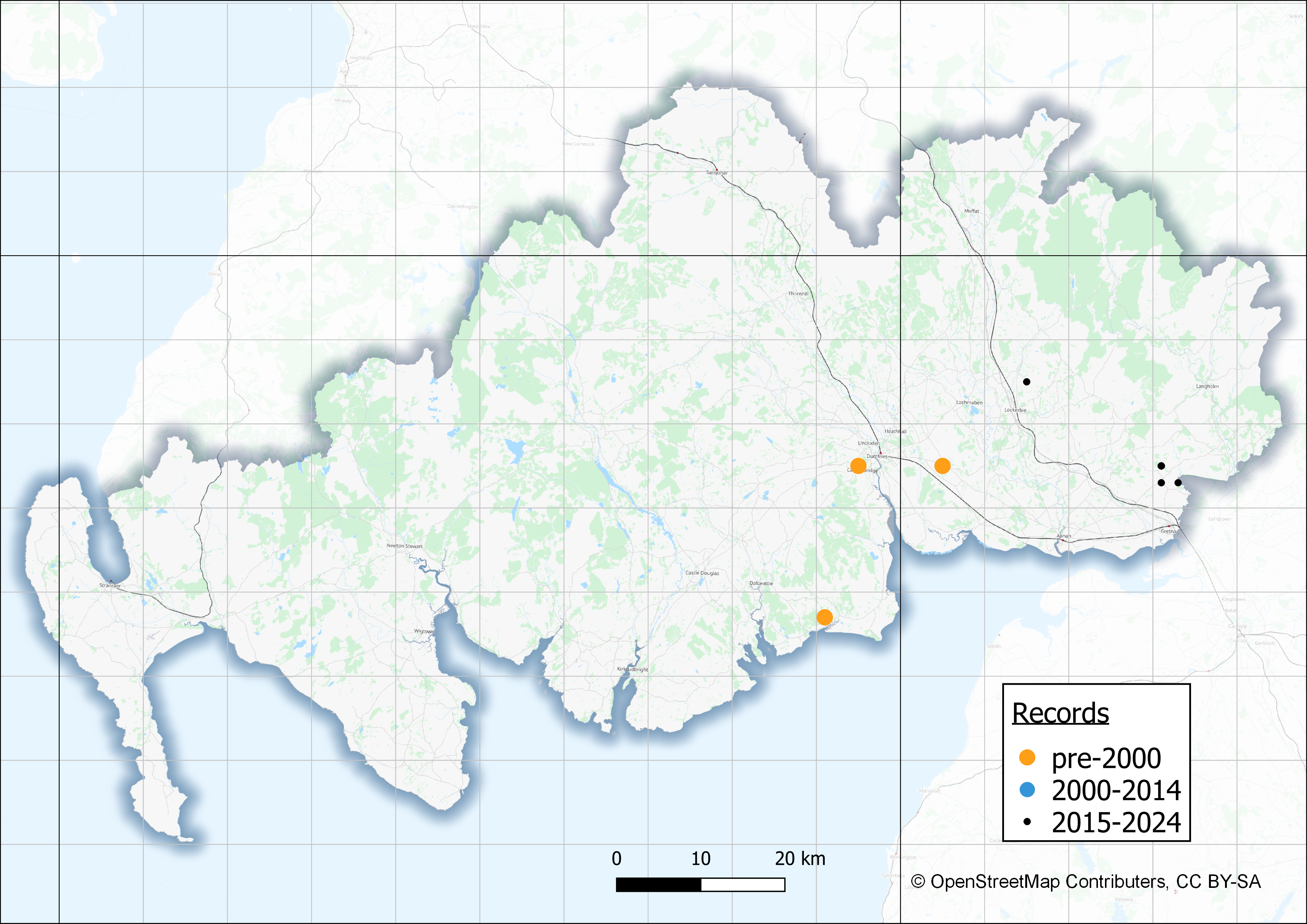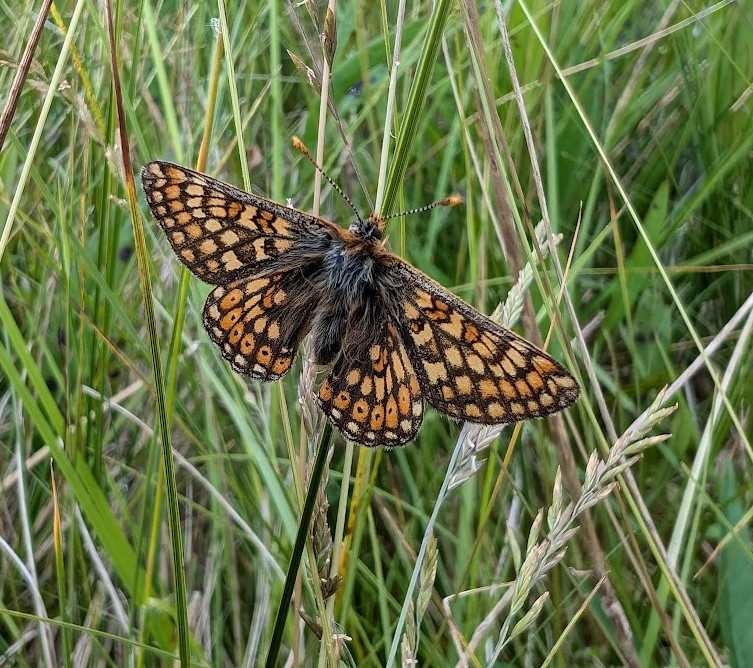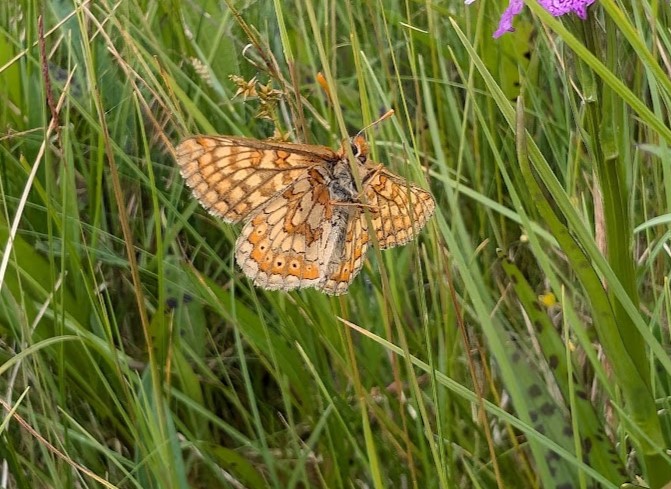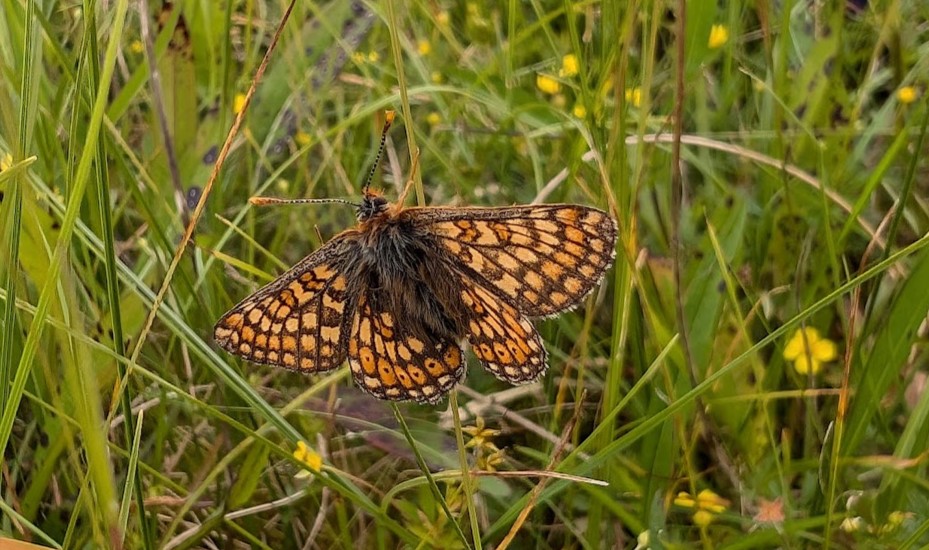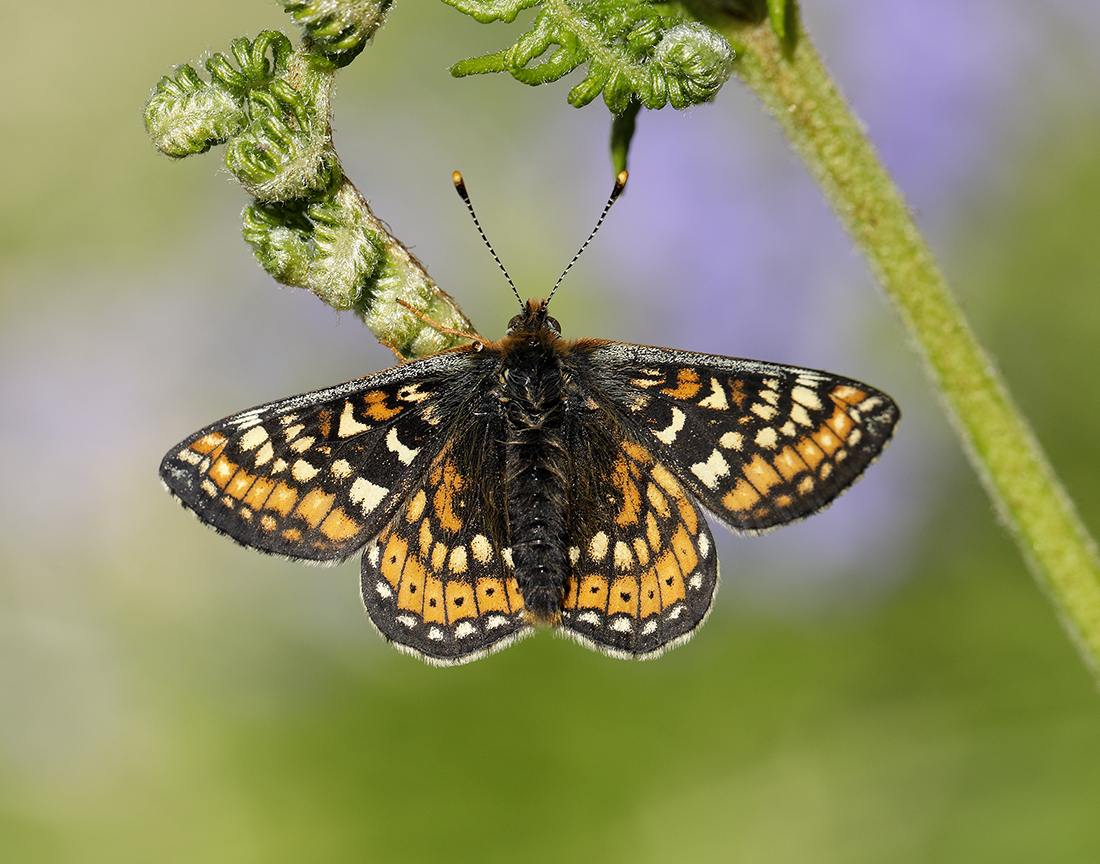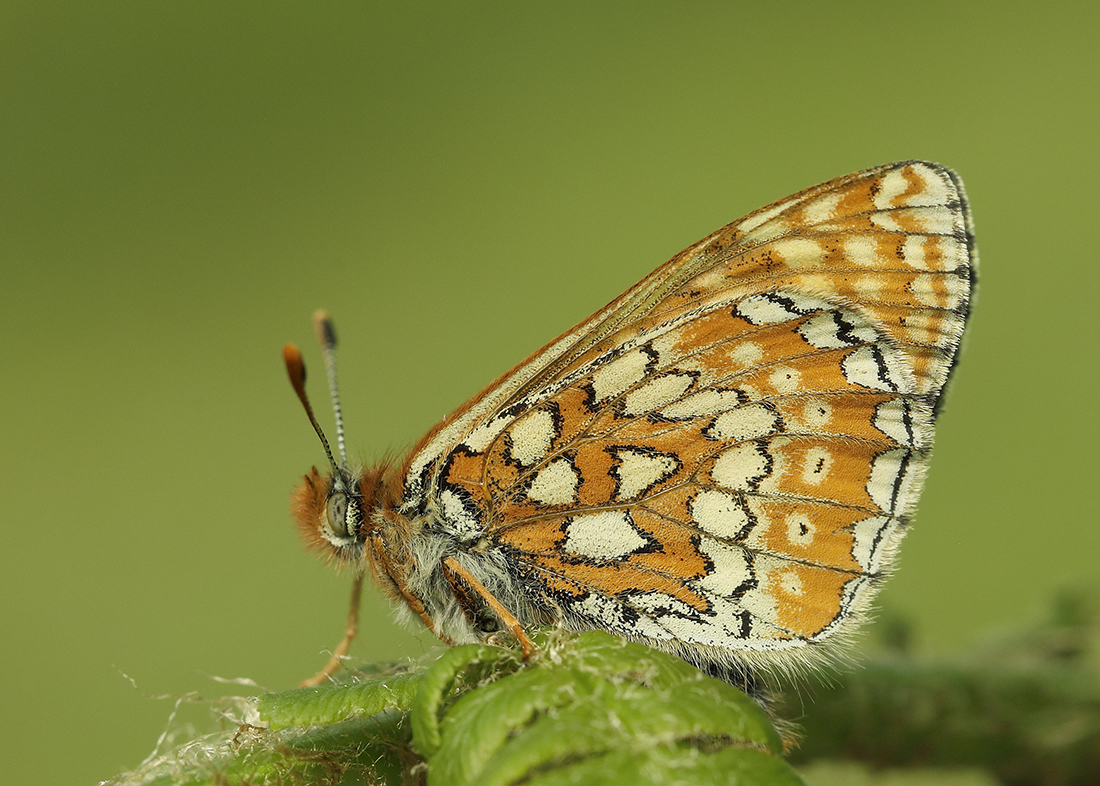The Marsh Fritillary was thought to be restricted in Scotland to Argyll and Lochaber, but a colony was discovered on a remote species-rich site near Boreland in 2020. Since then more colonies have been found on lowland mosses north of Gretna during searches for the Large Heath.
The butterfly once occurred on the lowland mosses near Dumfries but is thought to have been absent there since the mid-20th century. Following a successful reintroduction using Scottish stock, there are now numerous colonies in north and central Cumbria. Sightings have been made as far north as Bowness-on-Solway, around 15 km from the historic sites on the north Solway mosses.
The Marsh Fritillary is legally protected under the Wildlife and Countryside Act 1981 (as amended) and has suffered declines right across Europe, and a licence is required to disturb any of the life stages. The easiest, most accessible place to see Marsh Fritillary near our region is at Finglandrigg National Nature Reserve, just a few miles west of Carlisle.
Identification
The Marsh Fritillary is one of our most beautiful butterflies, sporting multi-coloured chequered wings reminiscent of stained-glass windows. This fritillary cannot be mistaken for any other unless only a fleeting glimpse is caught when it is possible it could be confused with a Small Pearl-bordered Fritillary, which can fly at the same time in similar habitats.
The communal caterpillars live in silken webs. Because of the habitat in which they are found, they cannot be mistaken for another butterfly species.
Despite its multi-coloured wings and the characteristic caterpillar webs, the Marsh Fritillary can be a hard butterfly to detect. The adults are reluctant fliers, needing sunny and calm conditions, while the webs can sometimes be overlooked.
Life cycle & flight period
One generation a year, the adults flying from early May to the end of June. Batches of eggs are laid on the foodplant. When the caterpillars emerge, they spin a communal web, and feed inside, climbing onto the surface of the web in sunny weather. Overwinters as a caterpillar in dense webs deep in the vegetation. In spring the caterpillars emerge and again spin a feeding web, but soon disperse.
Larval foodplant
Devil’s-bit Scabious.
Habitats
The Marsh Fritillary needs large areas of abundant Devil’s-bit Scabious, most often the result of light grazing with cattle, sometimes sheep, and can be found on damp, unimproved grassland and the edges of bogs and moorland.

